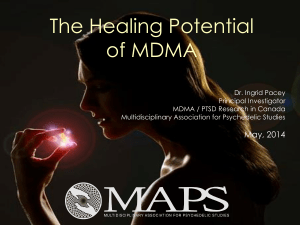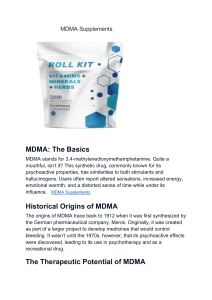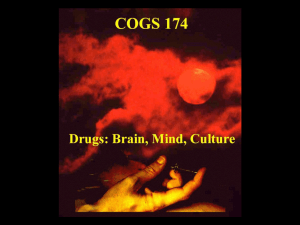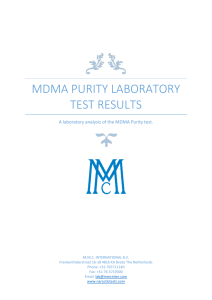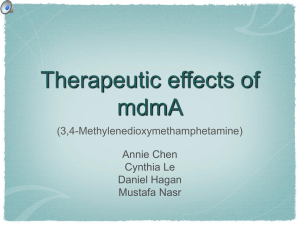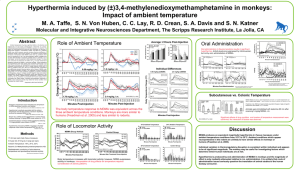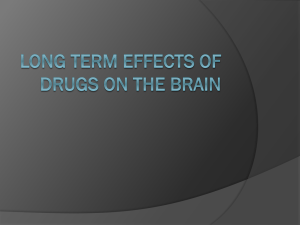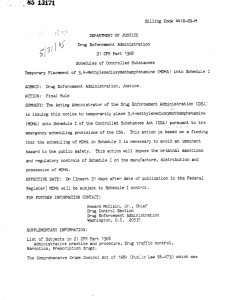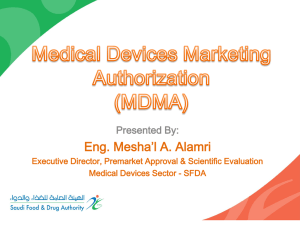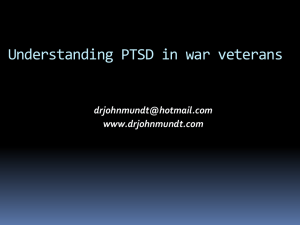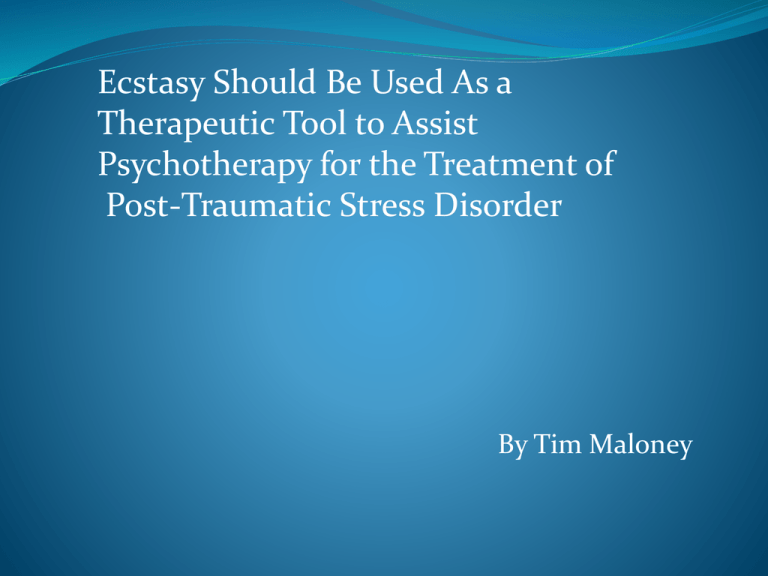
Ecstasy Should Be Used As a
Therapeutic Tool to Assist
Psychotherapy for the Treatment of
Post-Traumatic Stress Disorder
By Tim Maloney
History of PTSD
5th century B.C.- “ The
Trembler”
1860- “Nostalgia”
1866- “Railway spine”
1914-1918 “ Shell Shock”
1980 -The DSM-III
recognizes PTSD as a
disorder
History of MDMA
1912- Anton Köllisch from Merck Pharmaceuticals
synthesized MDMA for the first time
1976 - Alexander Shulgin and David Nichols published
the first report on MDMA’s psychotropic effect in
humans
May 31, 1985 -MDMA banned federally, and lists
MDMA as a class I drug
March 22, 2010-The MAPS Organization receives FDA
approval to begin research with MDMA along with
psychotherapy to treat PTSD
Current drug therapy for PTSD
Benzodiazipine
Zoloft
Paxil
Current Psychotherapy
Exposure Therapy
EMDR
emphasizing the reduction of
combines the exposure
avoidance through repeated
exposure exercises
8-15 Sessions
element, the cognitive
element, and relaxation
techniques while the eyes of
the participant are gazed
upon a mobile point or figure
moving from side to side
Cognitive Therapy / Relaxation
Training
concentrates on
challenging automatic or
acquired beliefs (safety
or trust) connected to
the traumatic
experience, and then
cognitively restructuring
the mind
“breathing retraining,”
muscle relaxation,
“cognitive elements”, and
exposure techniques to
help treat PTSD
Efficiency of current PTSD
treatments
Study comparing
efficiency of EMDR,
Relaxation, & Exposure
therapy
15 participants in each
group
8 Sessions
Efficiency
EMDR
Cognitive Therapy
Time and time again research
With these therapies showing
has shown EMDR to be
equivalent or superior to ET in
its effectiveness, but generally
the EMDR takes 40-100 hours of
“homework” longer to achieve its
prime effectiveness
Another study found shows after
12 session of EMDR 77% of its
participants showed a complete
elimination of the PTSD
diagnosis (Carlson, 1998)
large numbers, the
effectiveness of CT can be
seen in there shadows, as in a
study that compared
present-focused group
therapy and CT the results
showed 40% of all
participants had a significant
change in PTSD symptoms
MDMA
MDMA is a central nervous system stimulant that falls
under Amphetamine-type stimulant group (ATS)
The common effects of MDMA come from its ability to
bind the strongest to serotonin transporters inducing a
speedy release of serotonin and dopamine
MDMA Why?
MDMA is effective, and is a great tool to assist in
psychotherapy for PTSD, for its prime effectiveness for
treatment comes from “reducing the fear response to a
perceived emotional threat (Stevens 1999/2000).” The
results have shown in many ground breaking studies
with people dealing with difficult life events.
MDMA with Psychotherapy
In the study 12 participants diagnosed with PTSD went
through two eight- hour psychotherapy sessions with
MDMA scheduled 3-5 weeks apart. The results showed
over 80% no longer qualified by DSM as having PTSD
a 100% success rate after two more eight hour sessions
The control group not receiving the MDMA treatment, but
instead took a placebo had only a 25% success rate after the
two eight-hour
all three of the subjects who reported having PTSD to the
point where they could not work, were able to return to
work after the study.
Positive Effect
The beneficial effects can be seen in the user’s positive
moods, cognitions, beliefs, empathy, and reduced fear
(Parrott, 2007). MDMA may help a person establish a
deeper contact with their true self, as well as an increased
ability to recognize positive characteristic of the self
(Nichols 1986). Where Metzner (1998) found MDMA has
the ability to make one become more empathetic and bond
stronger with others. Parrot (2007) combines many
different studies showing MDMAs ability to promote
Euphoric and elated moods, an increase interpersonal
feelings, love, increased sensuality, and increase sense of
touch.
Immediate Negative Effects
Cardiovascular functioning
Hyperthermia
Death toll 160
Overdose
247 in 1994, 422 in 1995, 319 in 1996, 637 in 1996, 637 in
1997, 1142 in 1998, 2850 in 1999 and 4511 in 2000
Long Term Effects
Lesions on serotonergic nerve terminals
recall tests
verbal and visual memory
short term memory
cognition
Future Implications
The real future lies in the MAPS organization where it
is in the middle of a 10 year-$10 Million plan to make
MDMA into a government approved and regulated
prescription for MDMA.

